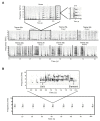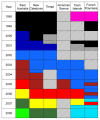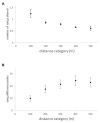Cultural Transmission, Evolution, and Revolution in Vocal Displays: Insights From Bird and Whale Song
- PMID: 33132953
- PMCID: PMC7550662
- DOI: 10.3389/fpsyg.2020.544929
Cultural Transmission, Evolution, and Revolution in Vocal Displays: Insights From Bird and Whale Song
Abstract
Culture, defined as shared behavior or information within a community acquired through some form of social learning from conspecifics, is now suggested to act as a second inheritance system. Cultural processes are important in a wide variety of vertebrate species. Birdsong provides a classic example of cultural processes: cultural transmission, where changes in a shared song are learned from surrounding conspecifics, and cultural evolution, where the patterns of songs change through time. This form of cultural transmission of information has features that are different in speed and form from genetic transmission. More recently, culture, vocal traditions, and an extreme form of song evolution have been documented in cetaceans. Humpback whale song "revolutions," where the single population-wide shared song type is rapidly replaced by a new, novel song type introduced from a neighboring population, represents an extraordinary example of ocean basin-wide cultural transmission rivaled in its geographic extent only by humans. In this review, we examine the cultural evolutions and revolutions present in some birdsong and whale song, respectively. By taking a comparative approach to these cultural processes, we review the existing evidence to understand the similarities and differences for their patterns of expression and the underlying drivers, including anthropogenic influences, which may shape them. Finally, we encourage future studies to explore the role of innovation vs. production errors in song evolution, the fitness information present in song, and how human-induced changes in population sizes, trajectories, and migratory connections facilitating cultural transmission may be driving song revolutions.
Keywords: birdsong; cultural evolution; cultural revolution; cultural transmission; local dialect; sexual selection; vocal learning; whale song.
Copyright © 2020 Garland and McGregor.
Figures




Similar articles
-
Migratory convergence facilitates cultural transmission of humpback whale song.R Soc Open Sci. 2019 Sep 4;6(9):190337. doi: 10.1098/rsos.190337. eCollection 2019 Sep. R Soc Open Sci. 2019. PMID: 31598287 Free PMC article.
-
Song hybridization events during revolutionary song change provide insights into cultural transmission in humpback whales.Proc Natl Acad Sci U S A. 2017 Jul 25;114(30):7822-7829. doi: 10.1073/pnas.1621072114. Epub 2017 Jul 24. Proc Natl Acad Sci U S A. 2017. PMID: 28739940 Free PMC article.
-
Global cultural evolutionary model of humpback whale song.Philos Trans R Soc Lond B Biol Sci. 2021 Oct 25;376(1836):20200242. doi: 10.1098/rstb.2020.0242. Epub 2021 Sep 6. Philos Trans R Soc Lond B Biol Sci. 2021. PMID: 34482732 Free PMC article.
-
Mechanisms of Cultural Evolution in the Songs of Wild Bird Populations.Front Psychol. 2021 Apr 26;12:643343. doi: 10.3389/fpsyg.2021.643343. eCollection 2021. Front Psychol. 2021. PMID: 33981272 Free PMC article. Review.
-
Song Morphing by Humpback Whales: Cultural or Epiphenomenal?Front Psychol. 2021 Jan 15;11:574403. doi: 10.3389/fpsyg.2020.574403. eCollection 2020. Front Psychol. 2021. PMID: 33519588 Free PMC article. Review.
Cited by
-
Frequency-dependence may moderate fitness costs linked to reduced bird song complexity.R Soc Open Sci. 2024 Oct 16;11(10):240766. doi: 10.1098/rsos.240766. eCollection 2024 Oct. R Soc Open Sci. 2024. PMID: 39416229 Free PMC article.
-
Biased cultural transmission of a social custom in chimpanzees.Sci Adv. 2023 Feb 15;9(7):eade5675. doi: 10.1126/sciadv.ade5675. Epub 2023 Feb 15. Sci Adv. 2023. PMID: 36791187 Free PMC article.
-
When does cultural evolution become cumulative culture? A case study of humpback whale song.Philos Trans R Soc Lond B Biol Sci. 2022 Jan 31;377(1843):20200313. doi: 10.1098/rstb.2020.0313. Epub 2021 Dec 13. Philos Trans R Soc Lond B Biol Sci. 2022. PMID: 34894734 Free PMC article.
-
Humpback whale song complexity and evolution on a northwestern Pacific breeding ground: Okinawa, Japan.R Soc Open Sci. 2025 Feb 12;12(2):241388. doi: 10.1098/rsos.241388. eCollection 2025 Feb. R Soc Open Sci. 2025. PMID: 39944297 Free PMC article.
-
Social learning and culture in birds: emerging patterns and relevance to conservation.Philos Trans R Soc Lond B Biol Sci. 2025 May;380(1925):20240128. doi: 10.1098/rstb.2024.0128. Epub 2025 May 1. Philos Trans R Soc Lond B Biol Sci. 2025. PMID: 40308131 Free PMC article. Review.
References
Publication types
LinkOut - more resources
Full Text Sources

